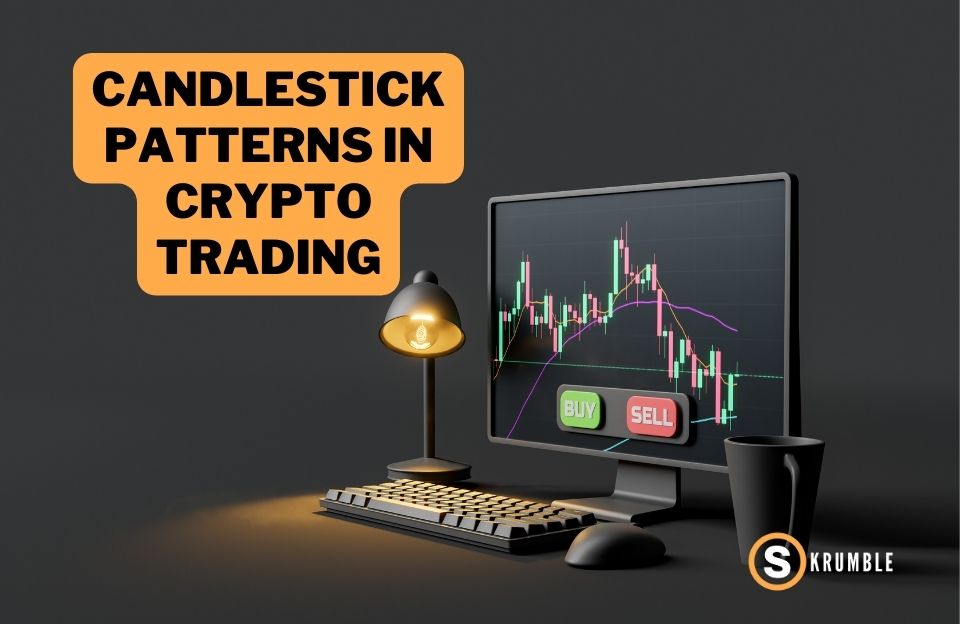Swen Keller
- Home
- /
- Guides
- /
- Intermediate
- /
- What is Leverage in...
What is Leverage in CFD Trading?
Swen Keller
Leverage in CFD Trading Quickly Explained:
In CFD (Contract for Difference) trading, leverage is a fundamental concept that allows traders to gain exposure to larger positions in the market than their initial investment would typically permit. It’s essentially borrowing money from the broker to increase your trading position size. Leverage has been used in stock trading, CFD trading, Forex trading, crypto trading and other financial markets for a long time.
Even in the modern day and age, most traders prefer to stick to the old-school style of making money, like investing in the stock market or Forex markets. But did you know that CFD trading offers a range of advantages that you cannot expect from traditional trading? CFD traders are people who essentially leverage on stocks or currencies and speculate on the price movements of various underlying assets without actually owning the assets themselves, hence, generating huge profits in the process. But what sets this mode of trading apart from other investments is the game-changing feature called ‘leverage’.
In this article, we will take a close look at leveraged trading, diving deeper into CFD positions and how leverage can significantly amplify your profits (as well as losses).
CFD Trading: An Overview

Before we begin, let us first shed light on some important technicalities involved in CFD Trading. CFD trading, short for “contract for difference trading” is one way of participating in financial markets in which investors stake their trading capital on the price movements of an asset or currency. In simple words, you (the investor) get into a contract with a broker and bet on the stock price of an asset. You have two options:
1) You can either bet long (or buy), which means you think the price of the financial assets will increase.
2) Or, you can bet short (or sell), which means you think the price of the financial assets will decrease.
At times, you get to choose the time when the contract will expire. If the price fluctuations line up with your prediction at the end of the contract, you win money; otherwise, you lose money. However, the story doesn’t just end there! There is a remarkable concept called leveraging, which can change the way regular trading works.
Let’s have a look.
What Does Leverage Mean in Trading?

In trading, leveraging is the practice of using borrowed funds or financial instruments to increase the potential returns on an investment. It allows traders and investors to control a larger position in the market with a smaller amount of their own capital.
This may involve taking a loan from a broker to increase your investment size. These borrowed funds help investors to control a larger position in financial markets than their original funds would allow them to. This can increase their chances of potentially boosting their profits. However, a higher risk is involved when you work with borrowed funds, as you stand to lose more than what you bargained for.
It is sort of a double-edged sword since it can go both ways, either in your favor or against you. Leverage is most commonly used in CFD trading. The most popular CFD trading platforms include FXPro, IG, ICMarkets, and Plus500. Leveraged trading is based on the leverage ratio, which determines how much capital you receive from the broker.
How do you calculate it, though? Let’s find out!
Leverage Ratio Formula
The leverage ratio represents the amount of additional funds you receive. To calculate them, simply use this formula:
Leverage Ratio = Total Funds / Your Investment
So for a leverage ratio of 1:100, with an investment of $100:
100/1 = Total Funds/$100 gives you $10,000. In this example, you would borrow $10,000 – $100 = $9,900 from the broker.
Example of Leverage Trading
To get a clearer picture of how leverage trading works, let’s use an example. Imagine you have $100 and want to buy shares of a company that cost $100 each. With your $100, you could only buy one share of this company. Here’s when leveraging comes into play!
You ask the broker if you can borrow some money to buy more shares. The broker agrees to lend you an additional $400, so now you have a total of $500. In this case, your leverage ratio is 5:1 (for every $1 of your own, you control a total of $5). With this $500, you can buy five shares of the company. $500 divided by $100 per share, that’s more than what you could have bought with just your initial $100!
Let’s see what happens if the company’s share price goes up. If the share price increases to $120, your five shares are now worth $600 (5 shares x $120 per share). You borrowed $400, so you need to pay that back to the broker. After repaying the $400 loan, you are still left with $200, which equals a profit of $100 ($200 – $100 initial investment). But what if it goes the other way? Your losses could be substantial as well.
Let’s say the share price goes down to $80 per share. The five shares you bought are now worth $400 (5 shares x $80 per share). You borrowed $400, and your initial outlay investment has suffered a decrease in value, leaving you with $0 in your trading account after repaying the loan. In this situation, using leverage has completely wiped out your initial $100 investment, leaving you with an empty trading account.
Key Concepts in Leverage Trading: Margin Trading

Here are some key points to keep in mind while working in the CFD trades:
Keep Position Open: Investors will continue to be affected by the price fluctuations of the underlying asset that they are trading until they decide the timeframe on their contract runs out, or they decide to cash out. Positions can also be closed when your equity falls below the losses you’ve incurred. It basically refers to continuing with your CFD trade.
Margin: The broker keeps the initial capital as a security deposit. This amount is used to keep your position in the market open.
Initial Margin: The capital needed to open a position.
Maintenance Margin: It is the margin requirement by the broker, which, at all times, must be maintained for your trading position to be kept open.
Margin Call or Stop-out: This is when your trading account balance runs out of sufficient funds needed to keep your position open, so the broker notifies you, asking you to add more funds or terminate the contract altogether.
Pros of Leverage in CFD Trading
There is a reason why leverage in CFD trading is considered to be a highly productive technique. Here are some benefits of using leverage in CFD trading.
- Magnified Profits: In terms of capital gains, this trading yields higher profits.
- Increased Buying Power: It significantly increases your purchasing power, allowing you to tap the benefits of assets outside the range of your trading capital.
- Better Distribution of Trading Capital: Since you are only allocating a small chunk of your trading capital, you have more funds available to spend on other projects, making your money highly productive and diversified. This can even enhance your exposure to other forms of the market, helping you stabilize your income in the long run.
- Risk Management: Despite being extremely risky, it can be manipulated to minimize losses. The majority of CFD platforms provide a range of leverage ratios. Therefore, you can continue with a CFD trade if you believe there is even a small chance of profiting from it if you use a lower leverage ratio. This way, even if you end up losing, your losses are minimized.
- Implement Advanced Trading Techniques: Most professional traders use various advanced trading options and techniques, such as scalping or arbitrage. This allows them to make the most out of potential opportunities.
Risks Involved in Leverage Trading
With so much to gain, people often overlook the risks involved in leveraged trading and often end up incurring significant losses. Here are some potential drawbacks and risks involved in leveraged trading that you should be aware of.
- Increased Losses: Many people fail to take into account the possibility that they could lose a significant amount of money when engaging in trading. Therefore, it is vital to assess each and every decision you make carefully.
- Increased Fees and Commissions: Brokers may charge a hefty sum for their services to you, which can significantly reduce the profits generated from leverage in trading.
- Margin Call: If the assets in leveraged trading substantially move against your call to the point you cannot maintain your position size, then the broker may ask for more funds to continue with the CFD trade or may even close your position.
- Market Volatility: It isn’t uncommon for assets to make huge jumps overnight in value. However, with increased leverage ratios, the losses you experience can prove to be detrimental to your financial stability.
- Uncertain Events: Since leveraged trading can increase your losses considerably, leverage traders are more exposed to adverse global events or news that can destabilize financial markets.
Leveraged CFD Trading in Crypto Markets

Despite the fact that the cryptocurrency landscape can be very volatile and risky for most investments, a growing number of traders have begun to show increased interest in the sector. In December 2017, for instance, the price of Bitcoin experienced an extraordinary surge. At the beginning of that year, Bitcoin’s price was around $1,000. However, by mid-December 2017, Bitcoin’s price had already surpassed $19,000, representing an increase of nearly 1,900% in less than a year!
This led to mass traction from the media and investors and opened the door to CFD trading in the world of crypto. Since price movements serve as the foundation for CFD trades, the cryptocurrency market has shown to be a top draw for these investors.
What is Leveraged Trading in a Crytpo Setting?
In the cryptocurrency marketplace, leveraged trading functions very similarly to how it would in a traditional market. Only this time, instead of betting on the price movements of a fiat currency, you do it on a cryptocurrency. One of its advantages is that the crypto market is functioning 24/7, meaning you are not restricted by the market hours.
However, if you are considering exploring this particular CFD trade setting, you need to keep a few things in mind. Firstly, the crypto world is constantly evolving, and new government policies and regulations are being introduced every so often. Therefore, a thorough risk assessment is necessary before moving forward with your plans. Moreover, lesser-known cryptocurrencies have lower liquidity, making it difficult for you to earn a decent amount of profit due to the higher bid-ask spread. For more information on leveraged trading in cryptocurrency, you can check out this article.
Platforms Offering CFD Trades in Crypto Markets
Since 2017, many crypto platforms have started offering investors the option of CFD trading with leverage. In this section, we explore the biggest and most popular cryptocurrency platforms offering users leverage CFD trading.
ICMarkets: This platform provides crypto enthusiasts tighter spreads, hence, reducing overall trading costs. Apart from cryptocurrency, it offers CFD trades on different assets such as Forex, stocks, indices, etc., serving as multi-purpose platforms. Leverage ratios can range from 2:1 to 5:1 (for crypto CFDs) for better risk management. Check out our full ICMarkets review to know more about this broker.
Plus500: Out of all the platforms in this list, Plus500 is perhaps the most user-friendly and accessible avenue for crypto CFD trades, especially for novice investors. Its stand-out feature includes very little to no commissions, only functioning on the bid-ask spread. It also features tools like stop-loss orders as a protective mechanism for beginners. Our comprehensive Plus500 review will give you a better understanding of this broker can offer.
OQtima: OQtima is one of the leading platforms for leverage in trading with reliable brokers and favorable conditions. The competitive spreads offered by the platform, especially in the crypto sector, have increased its popularity amongst investors. For an in-depth review about this broker click here.
FXPro: Popular for its MetaTrader platform, offering clients unique features such as automated trading and charting tools, FXPro allows traders to trade CFDs on a variety of asset classes and conveniently manage their funds.
Conclusion
Using leverage in CFD trading can offer several benefits to traders, which is why it is rapidly becoming popular in the financial markets. Using leverage in trading is a highly lucrative approach adopted by many traders today to maximize their profits from investments. However, with so much at stake, it is imperative to weigh all the factors involved in using leverage in CFD trading before you commit to a trade, considering things like market volatility, your trading capital, and market moves. Treading with caution will spell the difference between profits and losses, even success and failure. Deploying safety measures such as stop-loss orders, using low leverage ratios for riskier trades, and familiarizing yourself with the latest market trends can save you from a lot of trouble later.
FAQ
Most frequent questions and answers
It means that for every $1 of your initial capital used in the CFD trade, you control a total of $500 in the market. So for someone who invested $100 in a CFD trade with a leverage of 500:1, their Total Position Size will be $50,000.
It means your control in the market is 30 times that of your trading capital. It is more often expressed as 30:1 in a professional setting.
Leverage trading for beginners include practices such as avoiding high leverage ratios, using demo accounts to get familiarized with market trends, and using features like stop-loss orders. This prepares inexperienced traders for the real deal, in which one wrong decision can lead to heavy losses in the financial market.
No, it is not. Leverage trading is a very common practice amongst traders and is, in fact, used by many experienced investors to make excellent profits.
Most markets allow you to trade using leverage, including Forex markets, stock markets, cryptocurrency markets, and commodities markets, to name a few.
To calculate good leverage, consider factors such as how much risk you are able to take financially, analyze previous market trends, and consider government policies that restrict leveraging. A good starting point for beginners is a leverage ratio of 10:1 or 5:1. This minimizes the risk of excessive loss while preparing you for the market.
Skrumble.com provides all its content for informational purposes only, and this should not be taken as financial advice to buy, trade, or sell any investment instruments or products, including but not limited to cryptocurrencies, or use any specific exchange. Please do not use this website as investment advice, financial advice, or legal advice, and each individual’s needs may vary from that of the author. Investing in financial instruments, including cryptocurrencies, carries a high risk and is not suitable for all investors. It is possible to lose the entire initial investment, so do not invest what you cannot afford to lose. We strongly advise conducting your own research before making any investment decisions. This post includes affiliate links with our partners who may compensate us.
To view our privacy policy read here.






